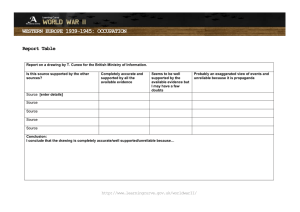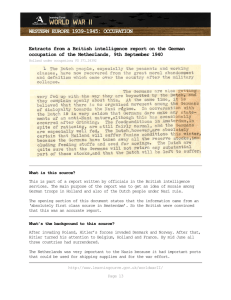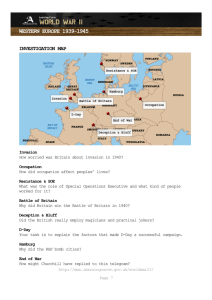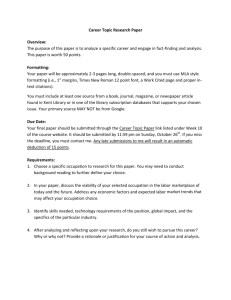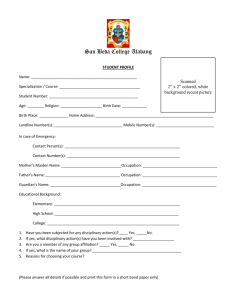WESTERN EUROPE 1939-1945: OCCUPATION OCCUPATION: TASK INSTRUCTIONS
advertisement
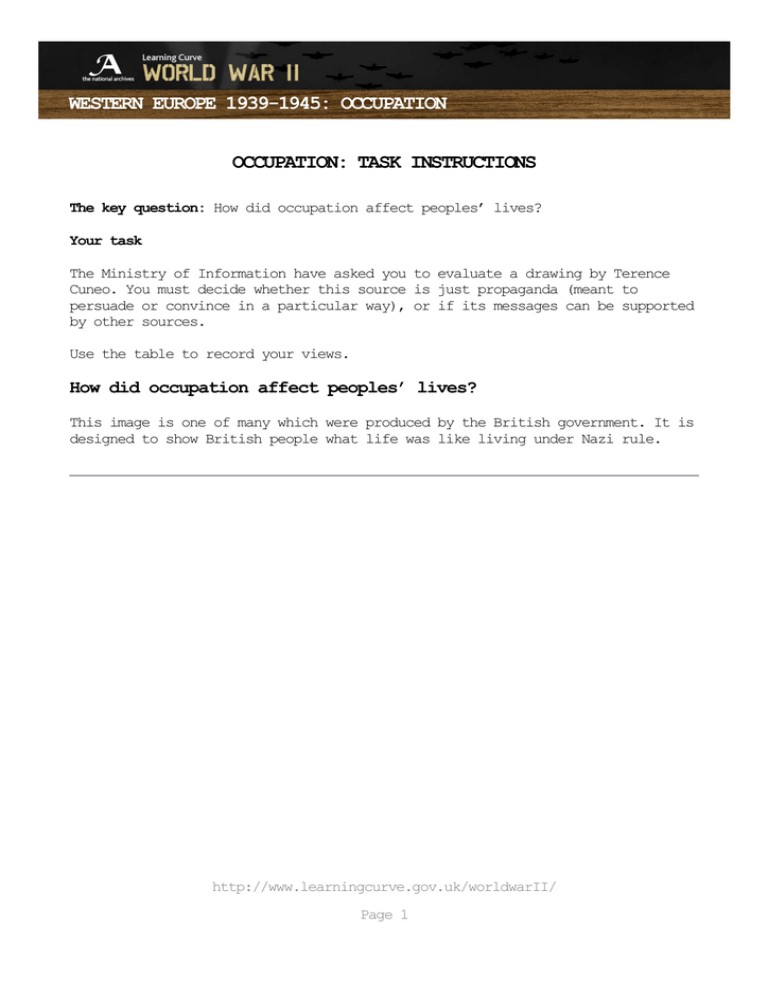
WESTERN EUROPE 1939-1945: OCCUPATION OCCUPATION: TASK INSTRUCTIONS The key question: How did occupation affect peoples’ lives? Your task The Ministry of Information have asked you to evaluate a drawing by Terence Cuneo. You must decide whether this source is just propaganda (meant to persuade or convince in a particular way), or if its messages can be supported by other sources. Use the table to record your views. How did occupation affect peoples’ lives? This image is one of many which were produced by the British government. It is designed to show British people what life was like living under Nazi rule. http://www.learningcurve.gov.uk/worldwarII/ Page 1 WESTERN EUROPE 1939-1945: OCCUPATION The British Ministry of Information produced this drawing during the war. It was one of a series of drawings that went under the title of ‘Under Nazi Rule’ Catalogue ref: INF 3/1794 http://www.learningcurve.gov.uk/worldwarII/ Page 2 WESTERN EUROPE 1939-1945: OCCUPATION What is this source? Terence Cuneo (1906-1996) was an artist who worked for the government at the British Ministry of Information from 1941. This is part of a series of drawings that he produced under the title ‘Under Nazi Rule’. The Ministry of Information produced thousands of pieces of propaganda during the war. It produced films, books, radio programmes and cartoons. What’s the background to this source? At the time this image was drawn German forces controlled most of Western Europe. Britain was the only democratic country still opposing Nazi Germany. Throughout the war Germany was very short of workers and resources to supply its war effort. Some historians think that these shortages were the main reason why the war broke out in 1939. It’s worth knowing that… This particular example was probably designed as a poster. The artist has left a space for a caption to be inserted. Not all of the drawings produced were used. Some were not quite right. Sometimes drawings were thought to be too upsetting. How does the artist get his message across through his drawing? 1. What is shown happening to the people in this in the picture? 2. The overall feel and tone of the scene, is it cheerful, frightening or depressing? 3. How the does artist use colour or shading? 4. How is the scene composed? How are different people positioned? What can we tell from their facial expressions or from the weapons/equipment shown? 5. Is the picture drawn from a particular point of view? 6. What you think the caption might have been? 7. What is the picture trying to tell us about countries controlled or occupied by the Nazis? 8. Do you think a photograph of a similar scene would be more objective (truthful)? http://www.learningcurve.gov.uk/worldwarII/ Page 3 WESTERN EUROPE 1939-1945: OCCUPATION You could: • • • Write a paragraph on how the artist gets his message across. Or use Worksheet (a) to comment on the image. If you would like more help, use Worksheet (b) to start you off. Or copy the drawing into a software package (eg desktop publishing, presentation or even animation or video) and explain how it achieves its aims. http://www.learningcurve.gov.uk/worldwarII/ Page 4
